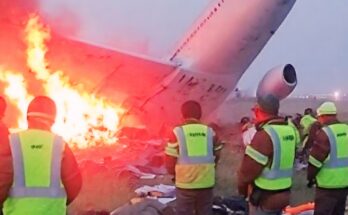
At the edge of the runway, the unmistakable silhouette of the F-35 Lightning II gleams in the morning sun. Sleek, angular, and brimming with cutting-edge technology, the aircraft is more than just a fighter—it is the centerpiece of a new generation of airpower. The airbase that houses it is no ordinary installation; it is a hub of innovation, training, and readiness designed to support one of the most advanced aircraft fleets in the world.
The F-35 Lightning II, often referred to as the Joint Strike Fighter, was developed to serve multiple branches of the U.S. military as well as allied nations. With variants tailored for conventional takeoff, short takeoff and vertical landing, and carrier operations, the jet has reshaped modern aviation tactics. An airbase built for the Lightning II reflects the same versatility and sophistication. From reinforced hangars that protect the aircraft’s stealth coatings to advanced simulators for pilot training, every element of the base is geared toward maintaining operational readiness.
Walking across the flight line, one notices the heightened security and precision. Airmen, technicians, and engineers move with purpose, each trained to handle the unique systems that make the F-35 formidable. Its low-observable design requires special maintenance facilities and materials, while its advanced sensors demand dedicated technicians. The base is not just a collection of runways and buildings—it is a living ecosystem where human skill and cutting-edge technology intersect.
Central to the F-35 airbase is the training mission. Pilots undergo extensive simulator sessions before even setting foot in the cockpit. These simulators, housed in state-of-the-art buildings, replicate everything from aerial combat to carrier landings, allowing aviators to practice missions without burning a drop of fuel. Once airborne, training flights are closely coordinated, often involving joint exercises with ground forces, naval units, and allied air forces. The goal is interoperability, ensuring that the F-35’s strengths—stealth, electronic warfare, and data-sharing—can be fully integrated into a combined battle network.
The base also houses a powerful logistical infrastructure. The Autonomic Logistics Information System (ALIS), now being replaced by the more streamlined ODIN (Operational Data Integrated Network), plays a critical role in tracking the health and readiness of every jet. Mechanics work hand-in-hand with software specialists, ensuring that maintenance is predictive rather than reactive. In many ways, the digital backbone of the airbase is as important as its runways.
Beyond its technical mission, the F-35 Lightning II airbase symbolizes the future of deterrence and defense. Communities surrounding these installations often feel the direct impact, from economic growth to the pride of supporting a mission that extends beyond national borders. As allied nations acquire their own F-35s, joint exercises and shared training programs turn these bases into international hubs of cooperation.
Looking down the runway as an F-35 thunders skyward, one is reminded that the airbase is more than just a military installation—it is the launching pad for the future of air dominance. With every sortie, every training mission, and every new pilot certified, the F-35 Lightning II airbase secures its role as the beating heart of modern airpower.
Would you like me to expand this into more of a day-in-the-life at an F-35 airbase (focusing on pilots, crews, and routines) or keep it broad and strategic like above?


